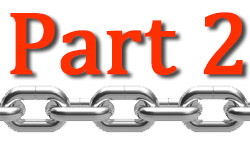 This is the second in the Guitar Chords Connection series. If you haven’t read Part 1 yet, I recommend going back so that you don’t miss the 4-Level Exercise. It is by far one of the best exercises you can learn to make connecting your guitar chords together a lot easier.
This is the second in the Guitar Chords Connection series. If you haven’t read Part 1 yet, I recommend going back so that you don’t miss the 4-Level Exercise. It is by far one of the best exercises you can learn to make connecting your guitar chords together a lot easier.
In this article you are going to be learning another very powerful exercise that will help you to improve your ability to connect chords together. The 4-Level exercise from Part 1 focused on improving your ability to connect two chords together. This next exercise focuses on getting you to be able to use one particular chord with any other chords.
Guitar Chords Connection – Interleaving Exercise
The Interleaving Exercise focuses on training particularly difficult chords; it is a great exercise to use when one chord continually causes you trouble.
In the past, I have had a number of students who have struggle to play chords like F Major, B Minor, and B7 (Dominant 7). After working with the Interleaving Exercise for 5-10 minutes, they are often much more comfortable with their stubborn chord, and in many cases can play them with ease.
Let’s take a look at the exercise…
The Interleaving ExerciseTo interleave means to ‘mix or alternate between‘ and that is exactly what you will be doing in this exercise; you will be mixing your stubborn chord together with many other chords. Here are the steps to do the exercise:
|
Why Does The Interleaving Exercise Work?
There are two main reasons why the Interleaving Exercise works as well as it does and they both have to do with the mental side of your guitar playing.
Reason #1 – Exposure
If you’ve read Expose Yourself and Improve Your Memorization than you’ll know that exposure can be one of the most powerful ways of improving your guitar playing skills. After you’ve seen or done something enough times, you can’t help be better at doing it. You brain learns that what you are doing is important though repetition and that it should be remembered well. The Interleaving Exercise follows this very same principle.
By placing your stubborn chord in between all the guitar chords that you’ve chosen, you just end up playing it a lot more than normal. Just by having to play it more, your mind and body become more comfortable playing the stubborn chord.
Reason #2 – Focus
The second reason why the Interleaving Exercise works so well is that it forces you to shift your focus away from the stubborn chord while still having to play it. If you haven’t tried doing the Interleaving Exercise yet, go and do it right now. Come back and continue reading once you’ve tried it for yourself…okay? Right!
Think about when you tried this exercise for a moment…I’ll bet that by the time you got to the end, you weren’t thinking about the stubborn chord anymore. Instead, you were thinking about all the other chords you had to play. Am I right? Why did that happen? It is because you learned to expect that chord everywhere.
By placing the stubborn chord in between all of the other chords, you would have learned very quickly that you had to keep coming back to the stubborn chord. After enough repetitions, you stopped thinking about the stubborn chord because it never changed, but what did change were all of those other chords you had to play. Your focus was shifted from “how hard the stubborn chord was to play” to “what is the next chord to play.” This might not seem like a big deal, but it is a hugely important part of learning to be a great guitarist.
One of the biggest differences between great players and beginners is how much they have to think about what they are are doing. Beginners have to think about every tiny little thing they are doing as they play. If they don’t think about it, it won’t happen and their playing suffers. However, great players have trained their mind and hands to do many things for them automatically; they don’t have think about the small details anymore and can just enjoy playing music.
This is idea of making things automatic is the whole key to the Interleaving Exercise – you are training your mind and fingers so that you can play that stubborn chord without even having to think about it. How cool is that!?
In the next section of the Guitar Chords Connection series, you’ll be learning how to make changes between chords even easier by using Shortcuts.

